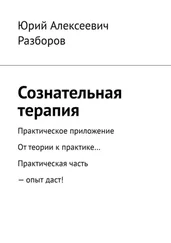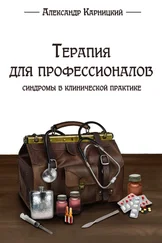Lyons-Ruth K. & Jacobvitz D. (1999). Attachment disorganization: Unresolved loss, relational violence, and lapses in behavioral and attentional strategies. In: J. Cassidy & P. R. Shaver (Hrsg.). Handbook of attachment. Theory, research and clinical applications. NY–London: Guilford Press, 520–554.
Lyons-Ruth K., Connell D. B., Zoll D. & Stahl J. (1987). Infants at social risk: Relations among infant maltreatment, maternal behavior and infant behavior. Developmental Psychology, 23, 223–232.
Lyons-Ruth K., Connell D. B. & Zoll D. (1989). Patterns of maternal behavior among infants at risk for abuse: Relations with infant attachment behavior and infant development at 12 months of age. In: D. Cicchetti & V Carlson (Hrsg.). Child maltreatment. Cambridge, MA: Cambridge University Press, 464–493.
Lyons-Ruth K., Connell D. B., Grunebaum H. U. & Botein S. (1990). Infants at social risks: maternal depression and family support services as mediators of infant development and security of attachment. Child Development, 61, 85–91.
Lyons-Ruth K., Repacholi B., McLeod S. & Silva E. (1991). Disorganized attachment behavior in infancy: Short-term stability, maternal and infant correlates, and risk-related subtypes. Attachment and Developmental Psychopathology, 3, 377–396.
Lyons-Ruth K., Alpern L. & Repacholi B. (1993). Disorganized infant attachment classification and maternal psychosocial problems as predictors of hostile-aggressive behavior in the preschool classroom. Child Development, 64, 572–585.
Lyons-Ruth K., Bronfman E. & Parsons E. (1999). Maternal frightened, frightening, or atypical behavior and disorganized infant attachment patterns. In: J. Vondra & D. Barnett (Hrsg.). Atypical attachment in infancy and early childhood among children at developmental risk (Monographs of the Society for Research in Child Development, 258. V. 64, 3). Malden, Mass.: Blackwell, 67–96.
Lyons-Ruth K., Melnick S. & Bronfman E. (2002). Desorganisierte Kinder und ihre Mütter–Modelle feindselig-hilfloser Beziehungen. In: K.H. Brisch, K.E. Grossmann,
K. Grossmann & L. Köhler (Hrsg.). Bindung und seelische Entwick–lungswege– Grundlagen, Prävention und klinische Praxis. Stuttgart: Klett-Cotta, 249–276.
Lyons-Ruth K., Yellin C., Melnick S. & Atwood G. (2005). Expanding the concept of unresolved mental states: Hostile/helpless states of mind on the Adult Attachment Interview are associated with disrupted mother-infant communication and infant disorganization. Development and Psychopathology, 17, 1–23.
Madigan S., Moran G. & Pederson D. (2006). Uresolved states of mind, disorganized attachment relationships, and disrupted interactions of adolescent mothers and their infants. Developmental Psychology, 42, 293–304.
Mahler M., Pine, F. & Bergmann A. (1978). Die psychische Gehurt des Menschen. Frankfurt/M.: S. Fischer. Main M. (1991). Metacognitive knowledge, metacognitive monitoring and singular (coherent) vs multiple (incoherent) models of attachment. In: C. M. Parkes,
J. Stevenson-Hinde & P. Marris (Hrsg.). Attachment across the life cycle. Lon-don–NY: Tavistock, 127–159.
Main M. (1995). Recent studies in attachment: Overview, with selected implications for clinical work. In: S. Goldberg, R. Muir & J. Kerr (Hrsg.). Attachment theory: Social, developmental, and clinical perspectives. Hillsdale, NJ: The Analytic Press, 407–474.
Main M. & Cassidy J. (1988). Categories of response to reunion with the parent at age 6: predicted from attachment classifications and stable over one-month period. Developmental Psychology, 24, 415–426.
Main M. & Goldwyn R. (1982). Adult attachment interview: Scoring and classification manual. Unveröffentl. Manual. University of California, Department of Psychology, Berkeley.
Main M. & Hesse E. (1990). Parents unresolved traumatic experiences are related to disorganized attachment status: Is frightened and/or frightening parental behavior the linking mechanism? In: M. T. Greenberg, D. Cicchetti & E. M. Cummings (Hrsg.). Attachment in the preschool years. Chicago: University of Chicago Press, 161–182.
Main M. & Morgan H. (1996). Disorganization and disorientation in infant strange situation behavior: Phenotypic resemblance to dissociative states? In: L. Michel-son & W. Ray (Hrsg.). Handbook of dissociation: Theoretical, empirical and clinical perspectives. NY: Plenum, 107–138.
Main M. & Solomon J. (1986). Discovery of an insecure-disorganized/disoriented attachment pattern. In: T. B. Brazelton & M. Yogman (Hrsg.). Affective development in infancy. Norwood, NY: Ablex, 95–124.
Main M. & Solomon J. (1990). Procedures for identifying infants as disorganized/ disoriented during the Ainsworth Strange Situation. In: M. T. Greenberg, D. Cicchetti & E. M. Cummings (Hrsg.). Attachment in the preschool years. Chicago: University of Chicago Press, 121–160.
Main M., Kaplan N. & Cassidy J. (1985). Security in infancy, childhood and adulthood: A move to the level of representation. In: I. Bretherton & E. Waters (Hrsg.). Growing points of attachment theory and research (Monographs of the Society for Research in Child Development, 209. V. 50. № 1/2). Chicago: The University of Chicago Press, 66–106.
Marvin R.S. & Brittner P.A. (1995). Classification system for parental caregiving patterns in the preschool strange situation. Unveröffentl. Manual. University of Virginia.
McElwain N. L., Cox M. J., Burchinal M. R. & Macfie J. (2003). Differentiating among insecure mother-infant attachment classifications: A focus on child-friend interaction and exploration during solitary play at 36 months. Attachment and Human Development, 5, 136–164.
Meaney M., Aitken D., Berkel С. V., Bhatnagar S. & Sapolsky R. (1988). Effect of neonatal handling on age-related impairments associated with the hippocampus. Science, 239, 766–768.
Meaney M. J., Aitken D. H., Bhatnagar S., Bodnoff S. R., Mitchell J. В. & Sarrieau A. (1990). Neonatal handling and the development of the adrenocortical response to stress. In: N. Gunzenhauser (Hrsg.). Advances in touch: New implications in human development. Skillman, NJ: Johnson & Johnson, 11–23.
Meins E. (1997a). Security of attachment and early cognitive development. In:
E. Meins (Hrsg.). Is security of attachment related to the infant’s style of language acquisition? East Sussex, GB: Psychology Press, 57–74. Meins E. (1997b). Security of attachment and the social development of cognition.
Hillsdale, NJ: Erlbaum. Meins E. (1997c). Security of attachment and the understanding of other minds. In:
E. Meins (Hrsg.). Is security of attachment related to the infant’s style of lan
guage acquisition? East Sussex, GB: Psychology Press, 111–128. Meyer A. (1957). Psychobiology: A Science of man. Springfield: Thoma.
Minde K. K. (1993). The social and emotional development of low-birthweight infants and their families up to age four. In: S. Friedman & M. Sigman (Hrsg.). The psychological development of low-birthweight children. Advances in Allied Developmental Psychology. Norwood, NY: Ablex.
Minde K. K. (1995). Bindung und emotionale Probleme bei Kleinkindern: Diagnose und Therapie. In: G. Spangler & P. Zimmermann (Hrsg.). Die Bindungstheorie. Grundlagen, Forschung und Anwendung. Stuttgart: Klett-Cotta, 361–374.
Naslund B., Persson-Blennow I., McNeil T., Kaij L. & Malmquist-Larsson A. (1984). Offspring of women with nonorganic psychosis: Infant attachment to the mother at one year of age. Acta Psychiatrica Scandinavica, 69, 231–241.
Newcombe N. S. (2007). Developmental psychology meets the Mommy Wars. Journal of Applied Developmental Psychology, 28, 553–555.
NICHD Early Child Care Network (1994). Child Care and Child Development: The NICHD Study of Early Child Care. In: L. Friedman & H. C. Haywood (Hrsg.). Developmental follow-up: Concepts, domains, and method, San Diego, CA: Academic Press, 37–396.
Читать дальше
Конец ознакомительного отрывка
Купить книгу






